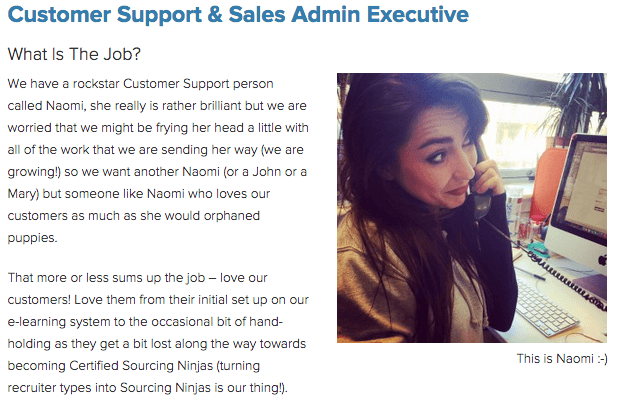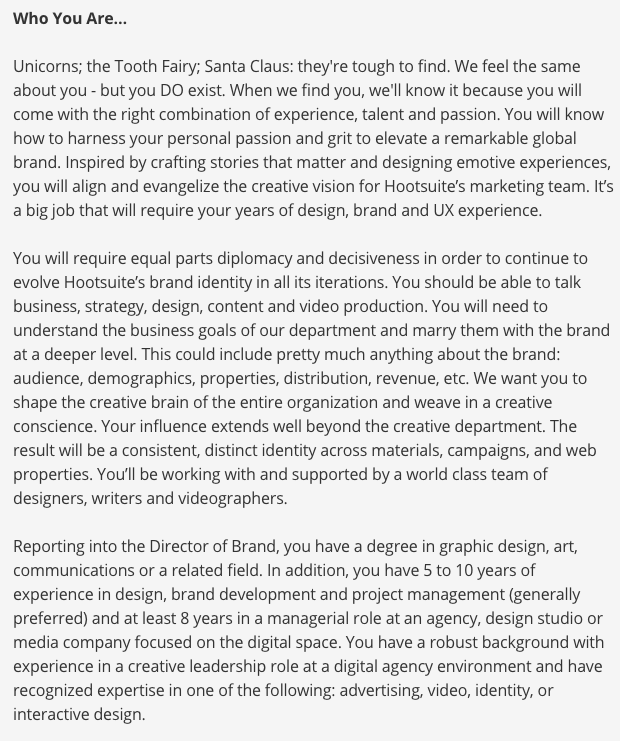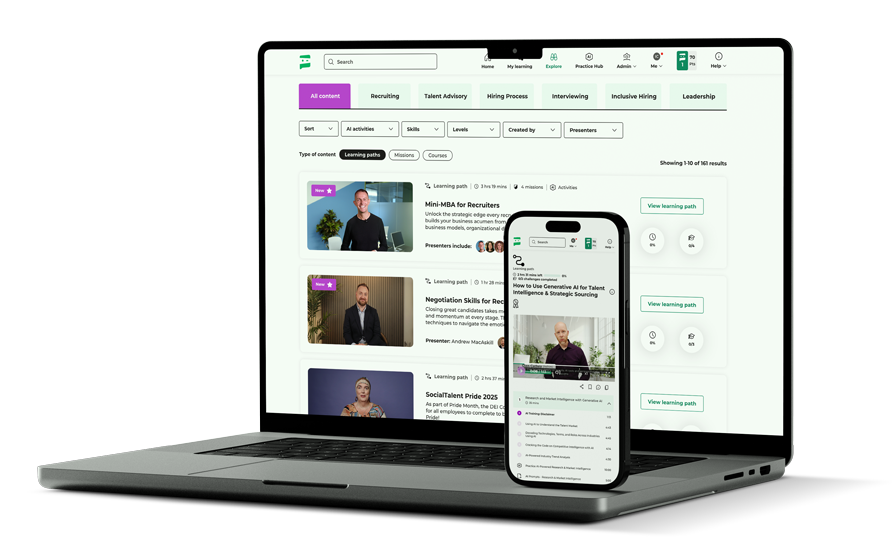
By Siofra Pratt
What is purpose?
In a broad sense, a person with purpose is defined as being someone who seeks meaning beyond themselves. In the recruitment sense, a purpose-driven candidate is someone who wants to do work that matters to them, and who will prioritise work that matters to them over money or advancement. In other words, purpose is fundamental to them. Mattering, ultimately, matters.
Why is purpose important?
The 2016 Purpose at Work Global Report by LinkedIn (the largest global study on the role of purpose in the workforce), tells us that purpose-orientated candidates have 64% higher levels of fulfilment in their work, are 50% more likely to take up leadership positions, and are 47% more likely to be promoters of their employers.
However, although professionals spend a majority of their waking hours at work, LinkedIn’s report also tells us that 2 out of 3 are disengaged in their jobs. In fact, only 30% of the U.S. workforce reports being actively involved, enthusiastic, and committed to their work. Which is why the report concludes that there has never been a more crucial time to connect people with their purpose.
But how can we, as recruiters, hope to do this? Well, it turns out, you have the power to make work more meaningful by connecting purpose with work through your job ads.
How do we articulate purpose?
 Ok, I know what you’re thinking. “How can I articulate the purpose in a job for a road sweeper or a box packer at a factory?” Well, according to our Chief Sourcing Ninja, Johnny Campbell, purpose can be found in absolutely every role and employer and can be defined and articulated, if you just stop to ask yourself “The 5 W’s”:
Ok, I know what you’re thinking. “How can I articulate the purpose in a job for a road sweeper or a box packer at a factory?” Well, according to our Chief Sourcing Ninja, Johnny Campbell, purpose can be found in absolutely every role and employer and can be defined and articulated, if you just stop to ask yourself “The 5 W’s”:
1. Why is this person being hired?
2. Why does this role exist?
3. Why do we need that department?
4. Why do customers value this?
5. What does this allow our customers to now do or do better?
Answering these five questions, should give you a clear idea of the role’s purpose, how it fits into the organisation and why doing it contributes to a bigger goal. For example, if I was hiring a content marketing professional to join the Social Talent marketing team, the answer to each of these questions might look something like this:
1. This person is being hired to write content for the Social Talent blog.
2. This role exists because we need to create more attention-grabbing content that speaks to the customers we want to attract.
3. We need a content marketing department to establish Social Talent as a thought-leader in the field of recruitment and to inform them about Social Talent and the product we sell.
4. Customers value this because they get completely free access to some of the best recruitment-related resources, information, news, tips, tricks and techniques out there.
5. These resources, information, news, tips, tricks, and techniques help our customers to become better informed, smarter, more productive recruiters so that they can make more, high quality placements and ultimately, earn more money.
By answering these five questions, I now know that the purpose of being a content writer at Social Talent is to help our audience of recruiters do what they do better by creating content that informs them of better ways to do their job and approach problems they may be having. The right person for this job will be able to understand the pain points of recruiters and write content that helps them address those pain points successfully, in an easy to understand and easy to read manner.
How to write purpose-driven job ads
 Once you’ve established the purpose of a role, the key to writing purpose-driven job ads is to tell the right candidate about that purpose so that they feel as if the advert is speaking directly to them and no one else. And the best way to do that is by telling a simple, unexpected, concrete, credible story using the 6 principles of SUCCESS, that highlights purpose at its core:
Once you’ve established the purpose of a role, the key to writing purpose-driven job ads is to tell the right candidate about that purpose so that they feel as if the advert is speaking directly to them and no one else. And the best way to do that is by telling a simple, unexpected, concrete, credible story using the 6 principles of SUCCESS, that highlights purpose at its core:
The 6 Principles of SUCCESs:
1. Simplicity
If a candidate doesn’t understand the job and the type of candidate you’re looking for, they won’t (and to be quite honest, can’t) apply. You need to make it absolutely clear to the candidate what this job is and the type of candidate needed to fill it and you need to do so from the very first line of your job ad. Take the first sentence of a job ad we wrote for a recruitment role we’re hoping to fill later this year, for example:
“You will be responsible for hiring the people that will enable Social Talent to change the way the world finds and hires talent.”
We’ve summarised the role and its importance to our organisation in one sentence. The candidate now knows what they’ll be doing and how they will fit into our company in the long term. There’s no room for ambiguity, just the simple truth. Naturally, we will go on to expand on the job and what it entails further in the job ad, but we want to establish what this job is and who it’s for, right from the off with one simple idea first.
2. Unexpectedness
Don’t write your job description in the same way every other recruiter on the planet does! If you want to make your job ads memorable, it’s really important that you pique the candidate’s curiosity and hold their interest, and the best way to do that in your job ads is to violate traditional expectations and be counterintuitive. What do I mean by that? Well, take the job ad for a recruiter I mentioned earlier, for example. Where most other job specs might say they would like the candidate to be “ambitious”, we said:
“We’re not interested in people who want a job. Apply elsewhere for that. We want people who’d like to own a company like ours one day and if that fails , you’ll retire early off your great commissions. We have big dreams and we expect you to have the same.”
By telling people we’re “not interested in people who want a job” and that they should “apply elsewhere for that”, we pique their curiosity – most job ads don’t tell people to apply elsewhere! And by telling them we really do want someone who has dreams of owning “a company like ours one day”, we hold their interest – most employers would not encourage staff to envision owning their company! By phrasing “we want you to be ambitious” like this, we’ve completely violated the norm. In doing so we’ve surprised people. By surprising them we’ve sparked their interest and curiosity. And by sparking those two things we’ve grabbed their attention over and above every other job ad they’ve read today (maybe even this month).
3. Concreteness
Ultimately, you want your job ads to help candidates be able to visualise themselves in the job and working within the organisation – to see, in their head, who they’ll be working with, where they’ll be sitting and what it’s like to work there on a daily basis – to put themselves into the story. And the only way to do this is by presenting them with concrete ideas – ideas that stimulate the senses and engage emotions.
When describing Social Talent in a recent job ad for a Customer Service Executive, we could have said “we’re an e-learning company selling into the recruitment industry worldwide”. But that’s boring. It’s neither exciting or memorable. It doesn’t give you a picture of what it’s really like to work in Social Talent. It’s not a concrete idea. So instead, we said:
“We are 60 people, 47 in Dublin, 10 in Poland, 1 in Australia and 2 lads (Vince and Walter) living in Cork who refuse to move to Dublin. Our office is next door to a cool university, on the tram line, we have a cool Smeg fridge and our oldest plant’s name is Harry!”
By highlighting the “60 people”, the lads who “refuse to move to Dublin”, the brand name of the fridge and even the name of our “oldest” plant, we’re giving you a very concrete picture of our organisation. We’re letting you visualise the look of office, the things in it, and the characters that fill it. Concrete ideas will add much needed character and personality to your ads.
4. Credibility
Simple ideas, unexpected phrasing, and concrete images are all well and good, but what you say and how you say it, also has to be believable. Just because you tell the candidate “you will work in an innovative, high-paced environment with lots of opportunity to progress” doesn’t necessarily mean it’s true, and the candidate knows that. All they have is your word for it and, let’s face it, you’re the one looking to find people to fill the job! Your ideas need to carry their own credibility. So from this moment on, it’s out with the broad sweeping statements like “innovative, high-paced environment”, and in with the employee quotes. For example:
“I started here 4 years ago and have had 5 different jobs in 3 functions. I work with amazing people who inspire me to be the best I can be. Come join us, it’s awesome!”
– Amy, Accounting Team
Adding a quote from an employee and naming them, makes what is said much more credible. Include a photo of that person and it becomes more credible. Link to that person’s actual LinkedIn profile and it becomes even more credible! For example, when we were looking to attract a new Customer Service Executive to work for our team, this is how our ad looked:

Candidates can sense how proud and appreciative we are of our current Customer Support person, they can see her name and they can put a face to it because we’ve included her picture.
5. Emotions
The easiest, most foolproof way to get people to care about your job ad is to make them feel something about it. And the best thing to remember when trying to tap into someone’s emotions is that people are hard wired to feel things about other people, not abstractions. While it’s very difficult for a candidate to feel something about a typical job description when it says something like, “you will report to the Commercial Director as part of a team of five”, it’s much easier to get them emotionally involved if you introduce people into the equation. For example:
“You will report to Vince (referred to as “Vincent” when he’s done something wrong), the Commercial Director. Vince is a father, husband and sales animal – in that order. His team consists of Dave, Graham and Naomi. Naomi’s the real boss!”
Not only have we named the four other team members the candidate will be working with giving them an identity, but we’ve also given you little snippets of personal information about them that gives you an insight into their personality. We give you investable information about these people, and once you’re invested in something, you start to care about it.
6. Stories
Storytelling is super important in the writing of your purpose-driven job descriptions. Why? Because stories act as mental flight simulators. By telling a story in our job descriptions we are able to put somebody into the shoes of that role, so that the applicant can envision how doing this job will contribute to a goal.
Good stories make people act. Think of all those charity appeal ads you’ve watched on TV. They almost always tell the story of a particular child leaving in poverty. They tell you their name, where they live, that her mother and father have passed away, that she has no clean drinking water, and that she may only live to see her 5th birthday. Then they tell you how you can help by calling this number or texting that word to donate a sum of money. We want our job ads to get people to react by applying to the job or getting in touch.
In a traditional job spec you might say something like: “You will have responsibility for the identification and hire of 15 new staff”. Instead why not say:
“We started last year with 6 people. Stephen and Reza joined us as interns after responding to a YouTube video; no salary, just the will to grow and learn. We hired them full time 3 months later. Lisa trained as a Black belt 3 years ago in her old job. She called asking us if we were hiring and we snapped her up! Since then we’ve hired Johnny’s brother Graham and his mate Dave. This year your job will be to scale this to 15 more people. You’ve got your work cut out for you!”
While it may be a longer way of essentially saying the same thing, this type of job function description will put a smile on someone’s face. It puts into perspective what they need to achieve within the role. They can see the story of how we got here and they also envision how they will fit in, what they have to do and the difference it will make to the organisation.
Bonus Tip: You, Your, and Yours
When you begin writing your purpose-driven job ad, you need to keep in mind that you are writing the job ad for the perfect candidate. Therefore, it needs to speak to them and them alone. So ditch every sentence that contains the words “we” or “us”, and instead replace them with “you, your and yours”.
How Hootsuite are using purpose-driven job ads to attract top talent
Every single Hootsuite job ad is written to appeal to the purpose of the person needed to do the job the way it needs to be done, to help Hootsuite transform the way the world communicates. They understand the power of telling a simple, unexpected, concrete, credible story (SUCCESs), and why it is so important to speak directly to the right candidate when telling it. Take this ad for a Creative Director for example:

The person that is right for this role will know that this job ad was written for them and no one else. They will relish the opportunity to “shape the creative brain of the entire organisation”, and crave being able to “evolve Hootsuite’s brand identity” and in doing so help this organisation achieve their company goal of transforming the way the world communicates. Hootsuite have told them how they can play their part and allowed them to visualise themselves playing it.
Conclusion
Purpose-driven job ads aren’t about selling the responsibilities of the job, purpose-driven job ads sell the opportunity to do work that matters to the right person. The next job ad you write, try to lead with purpose. And don’t forget to let us know how you get on!



